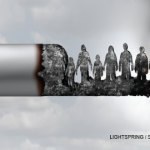Dr. Selye’s research began with a handful of caged rats left freezing in a cold winter wind on a rooftop in my hometown, Montreal. They were part of a series of experiments conducted by Dr. Selye, a rising star in the worlds of physiology and endocrinology, who analyzed the reaction of rodents to a variety of stresses. A highly prolific investigator, he published more than 1,700 articles and 39 books during a 40-year career. Among his many discoveries were the recognition and designation of the glucocorticoid and mineralocorticoid actions of steroids, their effects on inflammation, and the discovery of calciphylaxis and its potential therapeutic effects. He authored several popular books about stress, including the bestseller, Stress Without Distress.
The shady relationship between Dr. Selye and the tobacco industry only came to light in 2002, following the creation of the Legacy Tobacco Documents Library. Situated at the University of California in San Francisco (UCSF), it houses and maintains internal corporate documents that were produced during litigation between 46 U.S. states and the seven major tobacco industry organizations. These previously unknown papers shed light on the workings of Big Tobacco.
Companies were keen to propose the image of smoking as a scientifically approved diversion that could help avoid disease-causing stress.6 In fact, this reference to “diversion” reflected Dr. Selye’s belief that disease was the result of an unsuccessful adaption to environmental stimuli. He theorized that this stress could be counteracted by other stimuli, a process he called deviation. Dr. Selye proposed that smoking was an acceptable, if not ideal, form of deviation.7 In 1969, he was asked to testify before a committee of the Canadian Parliament about the hazards of smoking:7
For decades, tobacco advertising consistently spouted hollow claims to hawk their deadly products. It’s astonishing to discover the complicity of the medical establishment in some of this egregious behavior.
The question is not ‘to smoke or not to smoke,’ but to smoke or drink, eat, drive a car—or simply fret. Since we cannot discard our surplus energy, we must occupy it somehow often more damage is done by creating, through well-meant crusades of enlightenment, innumerable hypochondriacs whose main sickness is really the fear of sickness.
The UCSF archives also contain a series of damaging memos written by lawyers for the tobacco industry that shine an unflattering light on Dr. Selye:7
He is willing to write for us and wants us also to provide a suggested guideline. Dr. Selye should comment on the unlikelihood of there being a mechanism by which smoking could cause cardiovascular disease. Dr. Selye can point out that even if cigarette smoking had some carcinogenic effect it might account for only a markedly small number of deaths, the balance being the result of other influences.



